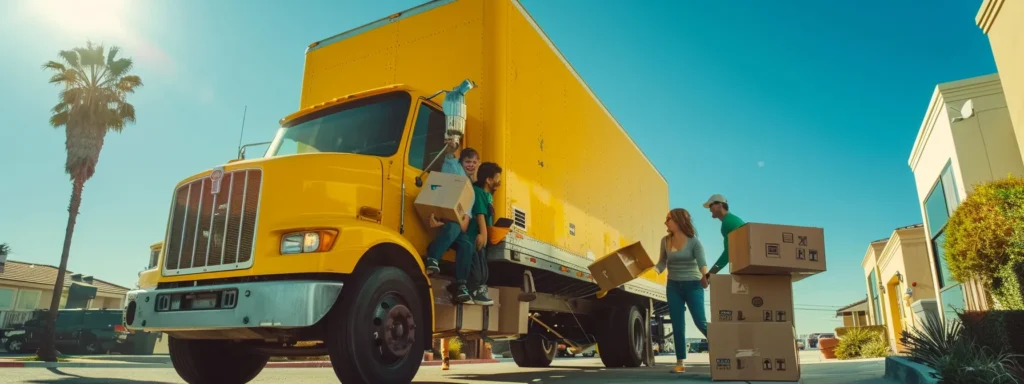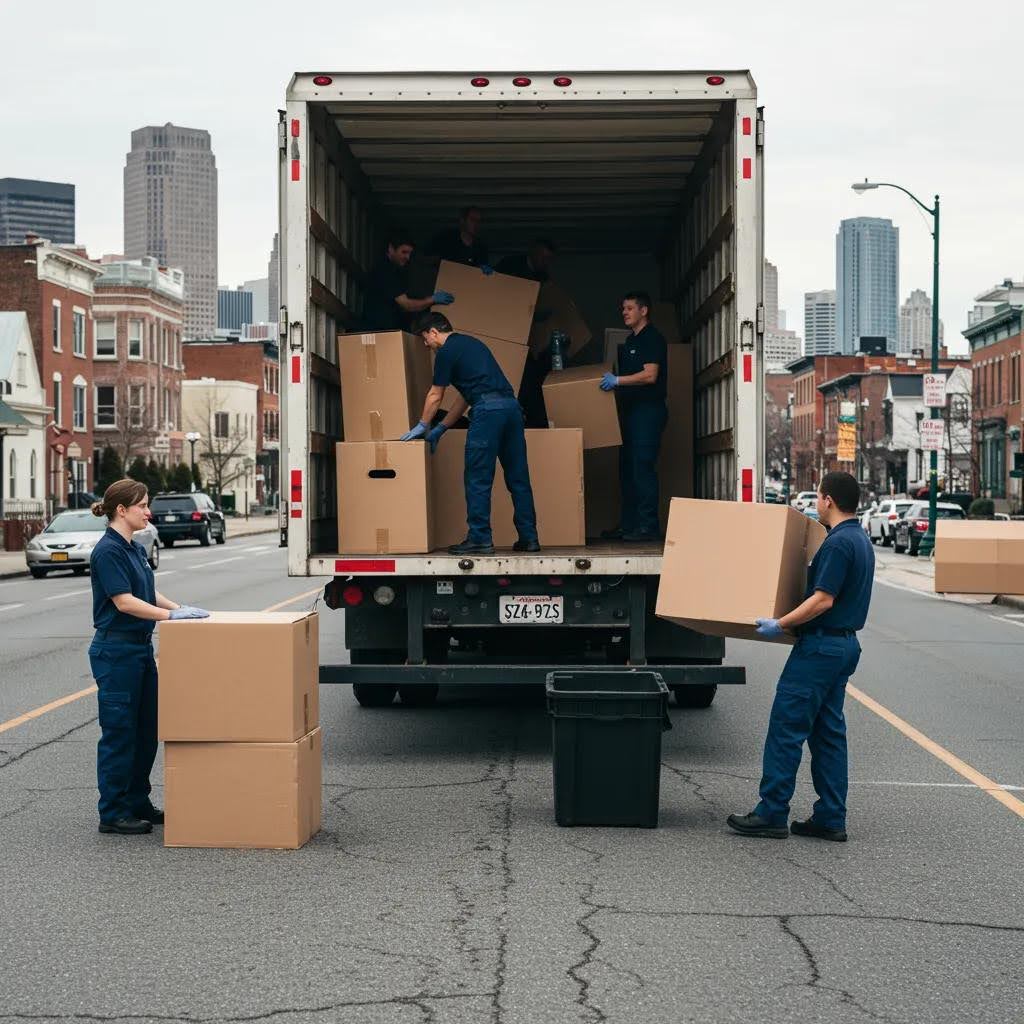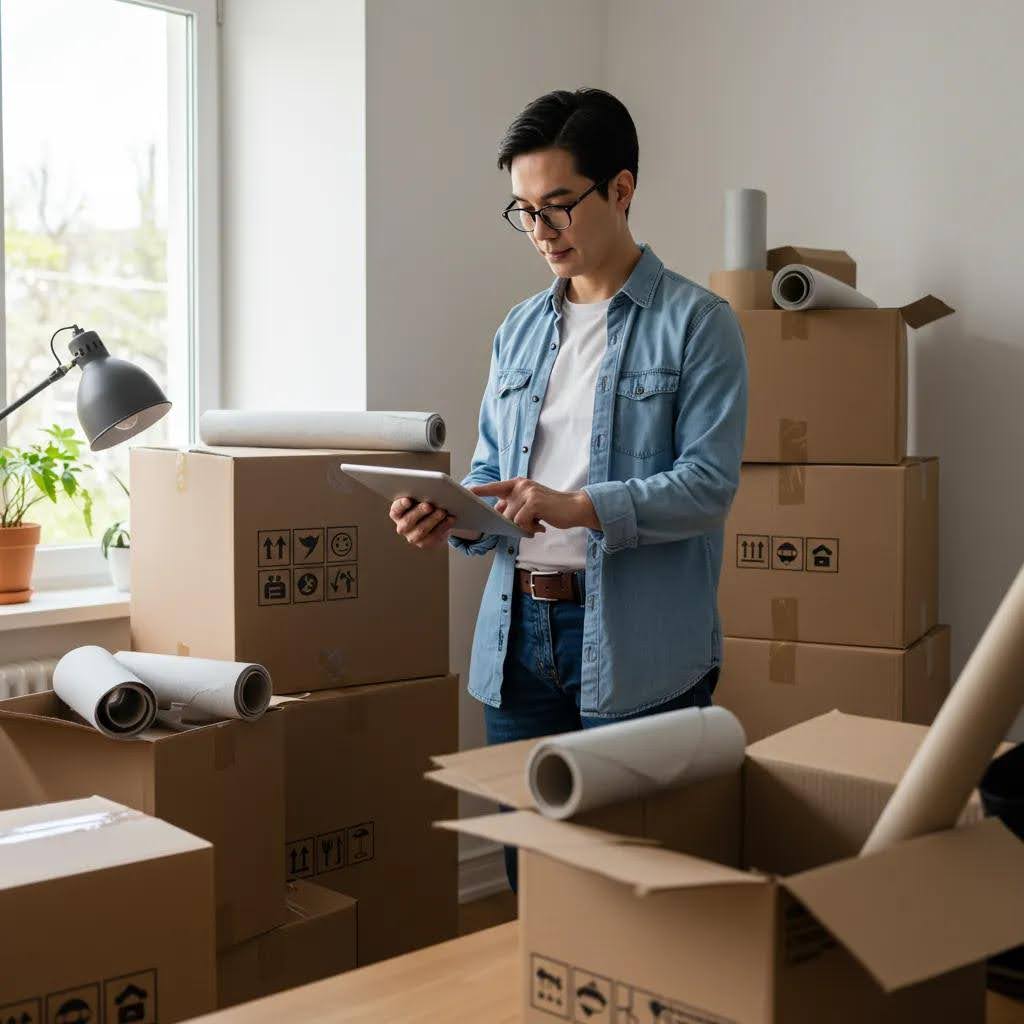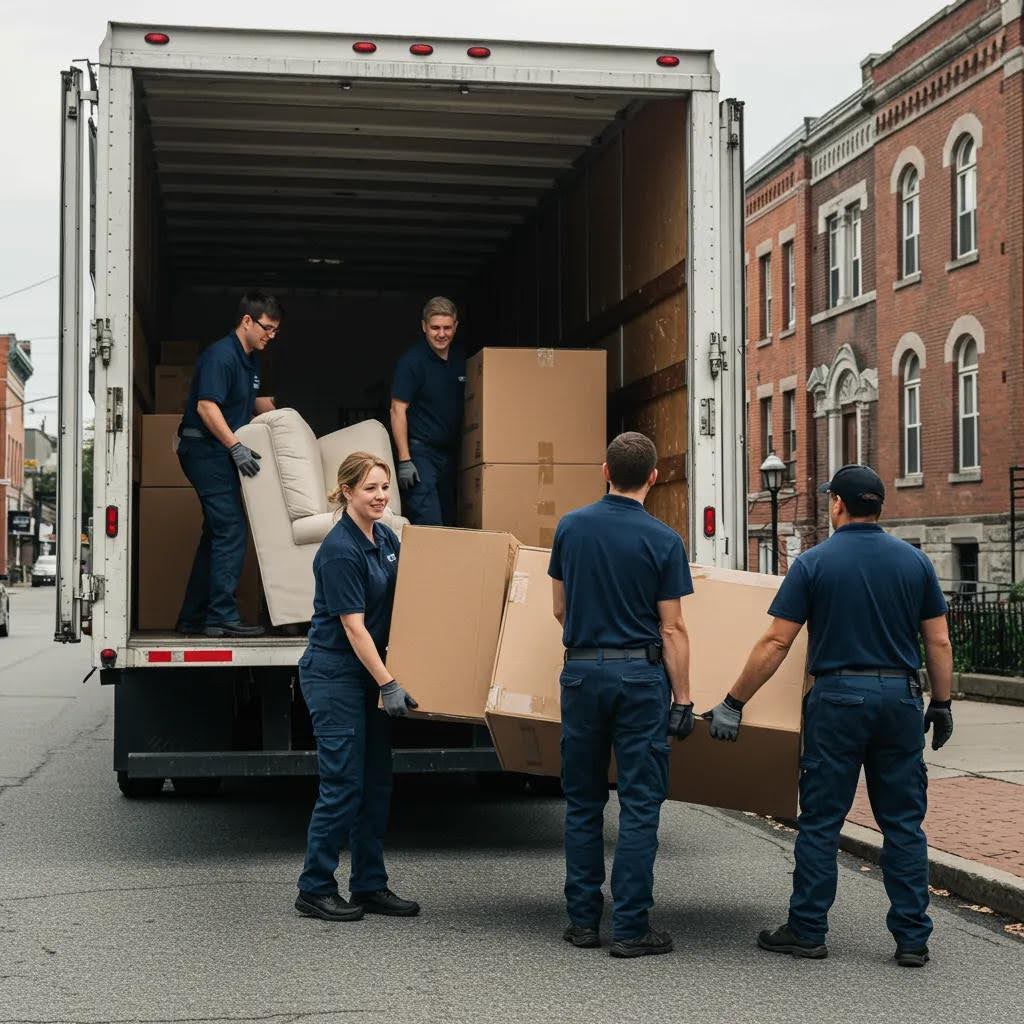Table Of Contents:
- Comprehensive Interstate Moving Guide: From Planning to Unpacking
- Preparing for an Interstate Move: Initial Planning Steps
- Assessing Your Moving Needs and Timeline
- Budgeting for Interstate Relocation Expenses
- Researching and Choosing Your New Location
- Creating a Comprehensive Moving Checklist
- Gathering Important Documents and Records
- Selecting a Reliable Interstate Moving Company
- Understanding Different Types of Moving Services
- Evaluating Movers: Credentials and Reviews
- Obtaining and Comparing Moving Estimates
- Recognizing and Avoiding Moving Scams
- Finalizing Contracts and Confirming Details
- Decluttering and Organizing Before the Move
- Sorting Belongings: What to Keep, Donate, or Sell
- Organizing a Garage Sale or Online Listings
- Proper Disposal of Unwanted Items
- Managing Hazardous Materials and Restricted Items
- Preparing an Inventory of Your Possessions
- Efficient Packing Strategies for Interstate Moves
- Gathering Quality Packing Supplies
- Packing Room by Room: Tips and Tricks
- Labeling Boxes for Easy Unpacking
- Protecting Fragile and Valuable Items
- Packing an Essentials Box for Immediate Needs
- Logistics and Final Preparations Before Moving Day
- Transferring Utilities and Services
- Updating Address and Notifying Relevant Parties
- Vehicle Transportation Options
- Planning for Pets and Plants During the Move
- Preparing Your Home for the Next Occupants
- Settling Into Your New Home After the Move
- Unpacking Systematically and Efficiently
- Setting Up Utilities and Services in Your New Home
- Exploring Your New Community
- Registering for Local Services and Documentation
- Tips for Adjusting to a New Environment
Comprehensive Interstate Moving Guide: From Planning to Unpacking
Moving can be a daunting task, especially when it comes to interstate relocations. Did you know that the average cost of an interstate move can vary significantly based on distance and the volume of your household goods? In this comprehensive interstate moving guide, I will walk you through essential steps, including selecting a reliable moving company and effective packing strategies. By the end, you’ll have the tools to handle the logistics of your move confidently, helping you minimize stress and manage your moving costs with ease. Let’s get started on making your transition to a new home smooth and efficient.
Preparing for an Interstate Move: Initial Planning Steps
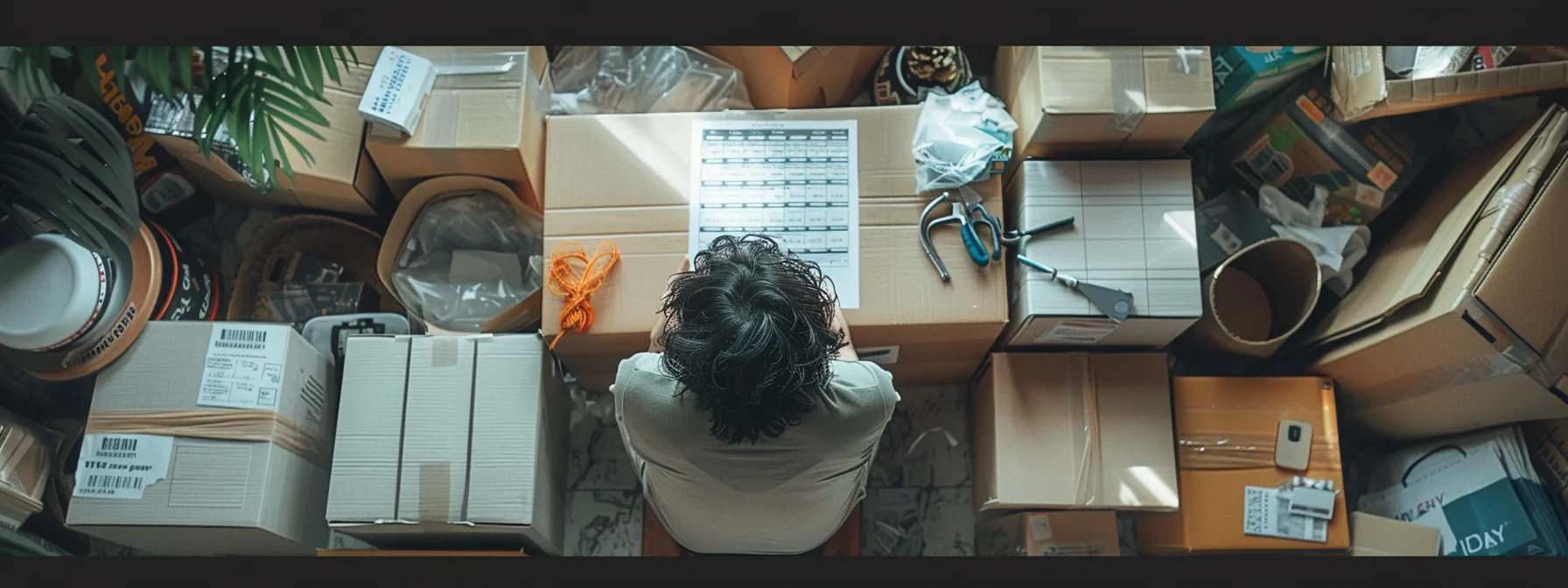
When preparing for an interstate Long Distance Moving, the first steps are crucial. I start by assessing my moving needs and timeline to understand logistics better. Then, I set a budget for the relocation expenses, ensuring I account for everything from moving services to unexpected costs. Researching and choosing my new location is essential, along with creating a comprehensive moving checklist to keep things on track. Lastly, I gather all important documents and records to ensure a smooth transition, reaching out for a free quote from white glove moving services to explore customer service options that align with my needs FMCSA Website.
Assessing Your Moving Needs and Timeline
When assessing my moving needs and timeline for an interstate move, I begin by outlining the specifics of my situation. This includes determining how many movers I need based on the size of my household and looking into moving companies that have the proper licenses and consumer ratings. I also establish a clear deadline for when I want to move, factoring in any external influences such as work or school schedules, which can help in selecting a reliable brand that aligns with my expectations:
| Step | Description | Action Items |
|---|---|---|
| Identify Moving Needs | Understand household size and special items | List items to move, assess additional services |
| Research Movers | Find licensed moving companies with good reputations | Check online reviews, ask for recommendations |
| Set Timeline | Establish moving date and preparation schedule | Create a calendar with key dates |
| Budget Planning | Estimate all moving expenses | Include packing supplies, movers, unexpected expenses |
Budgeting for Interstate Relocation Expenses
Budgeting for interstate relocation expenses is a vital step that I approach with careful consideration. I start by getting estimates from long distance movers, as rates can vary significantly, especially when services like packing and crating are included. To cut costs, I also consider hosting a garage sale to declutter, which not only reduces the number of items I need to move but can also generate extra cash. If I decide to use international van lines for my move, I factor in their additional services and options for transporting my belongings safely, ensuring I have budgeted accordingly for the entire relocation process.
Researching and Choosing Your New Location
Researching and choosing my new location before I move interstate is crucial for ensuring a smooth transition. I focus on understanding the inventory of local amenities, schools, and healthcare facilities, as these factors can significantly impact my daily life. Additionally, I make a checklist of my priorities, such as neighborhood safety and commuting options, so I can evaluate potential areas to determine where I’ll feel most comfortable and settled in my new home.
Creating a Comprehensive Moving Checklist
Creating a comprehensive moving checklist is essential for staying organized during my interstate move. I start by including key tasks such as contacting a state moving company and checking their reputation, ensuring they align with customer satisfaction standards set by the United States Department of Transportation. Additionally, I note important deadlines, such as booking Allied Van Lines, to ensure that my moving timeline remains on track and efficient, helping me to avoid any last-minute surprises.
Gathering Important Documents and Records
Gathering important documents and records is a crucial part of my preparation for an interstate move. I ensure that I collect essential papers, including my insurance policy, credit history, and any broker agreements related to the relocation. This not only helps in maintaining my financial stability but also aids in a smooth transition, allowing me to focus on organizing my belongings using the Marie Kondo method, which emphasizes recycling and decluttering to create a more manageable moving experience.
You have your plans in hand, but the hardest part awaits. Finding a trustworthy interstate mover is the next step in your journey.
Selecting a Reliable Interstate Moving Company
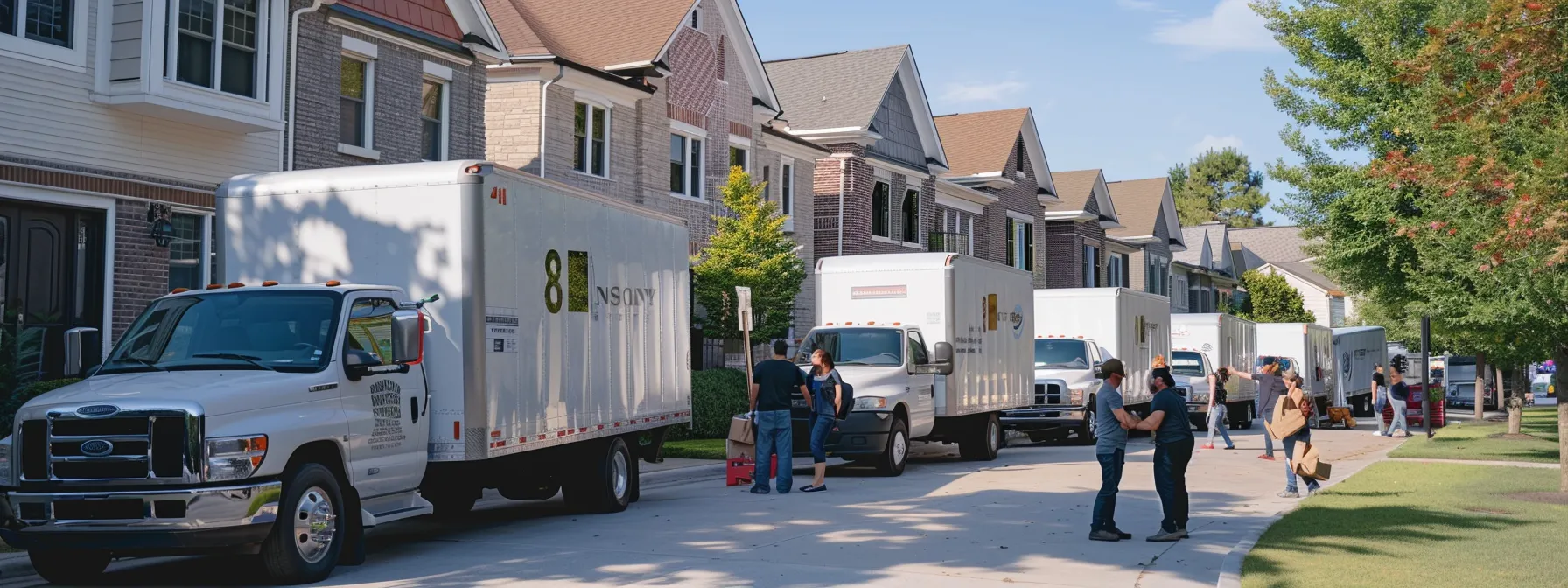
When selecting a reliable interstate moving company, I focus on understanding the different types of moving services available, including options offered by removalists. I evaluate each mover’s credentials and reviews to ensure they provide quality transport. It’s also crucial to obtain and compare moving estimates, recognize and avoid moving scams, and finalize contracts to confirm all details for a smooth moving experience.
Understanding Different Types of Moving Services
When I look at the various types of moving services provided by interstate moving companies, I realize that understanding these options is essential to managing my relocation effectively. Full-service movers typically handle everything from packing to unloading my property, which can streamline the process but often comes with higher interstate moving costs. On the other hand, if I choose a self-service option, I may save on expenses by doing some of the packing and loading myself, but I’ll need to be meticulous about my contract to avoid any hidden fees or misunderstandings later on.
Evaluating Movers: Credentials and Reviews
When I evaluate movers for my interstate relocation, I prioritize their credentials and reviews for peace of mind. I check if the company, such as United Van Lines, is licensed by the Department of Transportation, as this ensures they comply with industry regulations. Reading customer feedback also plays a crucial role; I look for insights about their experience with cargo handling, distance traveled, and overall service quality, which helps me make informed decisions based on practical moving tips.
| Evaluation Criteria | Description | Importance |
|---|---|---|
| Licensing | Ensure the mover is licensed and insured. | Legal compliance and protection in case of issues. |
| Reviews | Read customer reviews on various platforms. | Gives insight into customer satisfaction and service quality. |
| Experience | Assess the moving company’s years in the industry. | Experience often correlates with reliability and efficiency. |
| Transparent Estimates | Request detailed moving estimates to avoid hidden fees. | Ensures clarity in cost and services provided. |
Obtaining and Comparing Moving Estimates
When obtaining and comparing moving estimates, I make sure to request quotes from multiple interstate movers to get a clear sense of the market. I look for both fixed rate options and hourly pricing, as this can significantly affect my overall budget. Additionally, I carefully evaluate what each quote includes—like the handling of my vehicle or additional services such as packing—ensuring there are no hidden fees that could come up later in the process.
| Evaluation Criteria | Description | Importance |
|---|---|---|
| Estimated Costs | Compare fixed rate versus hourly estimates. | Helps in understanding overall expenses. |
| Services Included | Clarify what is covered in each estimate. | Prevents unexpected charges and ensures transparency. |
| Company Reputation | Research customer reviews and ratings. | Gives insight into the reliability and quality of service. |
| Vehicle Transport | Check if vehicle moving is part of the service. | Important for those needing to transport their vehicle. |
Recognizing and Avoiding Moving Scams
Recognizing and avoiding moving scams is essential when selecting a reliable interstate moving company. I’ve experienced that scammers often lure unsuspecting customers with very low estimates, only to inflate prices once the move is underway. To protect myself, I ensure that any company I consider is properly licensed and insured, and I check their reputation through online reviews. Additionally, I pay attention to their arbitration policies, as reputable movers will have transparent procedures to handle disputes, keeping me informed and safeguarded against potential fraud. Understanding my rights under the law can further empower me in navigating the moving interstate process and help me avoid common pitfalls while ensuring that my relocation remains smooth and stress-free.
Finalizing Contracts and Confirming Details
Finalizing contracts and confirming details with my chosen interstate moving company is essential for a smooth relocation. I make it a point to meticulously review the entire contract, ensuring it includes important information such as the moving dates, total costs, and the telephone number of the moving representative for any follow-ups. Additionally, I ask about specific customs requirements if my move involves any cross-border elements, and gather tips from the movers regarding any particular removals procedures that might apply to my situation.
| Step | Description | Action Items |
|---|---|---|
| Review Contract | Examine all details to ensure accuracy. | Check dates, costs, and services included. |
| Verify Contact Information | Make sure to have the moving company’s telephone number. | Record it for easy communication. |
| Discuss Customs | Confirm requirements if relevant. | Ask the movers about specific procedures. |
| Seek Moving Tips | Gather best practices from the moving company. | Implement suggestions for a smoother move. |
Finding the right moving company is just the beginning. Now, it’s time to clear the clutter and get organized, making your move not just easier but more meaningful.
Decluttering and Organizing Before the Move

Before moving day arrives, I focus on decluttering and organizing my belongings effectively. This involves sorting through my items to decide what to keep, donate, or sell, and I often organize a garage sale or list things online to minimize moving costs. It’s also essential to properly dispose of unwanted items, manage hazardous materials, and compile an inventory of everything I own, ensuring that nothing is overlooked as I prepare for the move with van lines. By understanding these key steps, I can create a smoother transition, even when navigating stairs or unexpected challenges.
Sorting Belongings: What to Keep, Donate, or Sell
When sorting belongings before my move, I focus on assessing each item’s necessity and condition. I categorize items into three groups: keep, donate, or sell. Documents related to important life events, such as birth certificates and contracts, are prioritized for safekeeping, while everyday items that I no longer use can be safely wrapped in bubble wrap and sold or donated. This approach ensures that I pay attention to accessibility in my new home while also minimizing clutter, making my move with North American Van as smooth as possible:
- Identify essential documents to keep
- Evaluate items for donation or sale
- Use bubble wrap for fragile items
- Plan for a streamlined moving process
Organizing a Garage Sale or Online Listings
Organizing a garage sale or creating online listings can be an effective way to declutter before my interstate move. I start by assessing my items, especially antiques or collectibles that might draw interest, and determining a reasonable price for each based on their condition and market value. Utilizing platforms like social media or local classifieds allows me to reach a broader audience, making it easier to sell unwanted goods while easing my packing process. By checking guidelines set by the Federal Motor Carrier Safety Administration for transporting any remaining items, I can ensure that my move with North American Van Lines is as smooth and stress-free as possible:
- Gather items to sell.
- Set competitive prices for your belongings.
- Advertise through social media or local online platforms.
- Coordinate a garage sale to attract local buyers.
- Focus on antiques or collectibles to appeal to specific interests.
Proper Disposal of Unwanted Items
Proper disposal of unwanted items is a critical step in my decluttering process before an interstate move. I always consider the risk of potential damages, both to my belongings and to the property I’m leaving, as my landlord expects the space to be returned in good condition. This means responsibly disposing of hazardous materials and items that can’t be sold or donated, particularly because neglecting this can lead to unexpected tax liabilities or fees due to damages.
| Item | Action | Notes |
|---|---|---|
| Furniture | Sell or donate | Check local charities or online platforms |
| Electronics | Recycle | Find certified e-waste recycling programs |
| Hazardous Waste | Dispose of properly | Follow local guidelines for disposal |
| Excess Clothing | Donate | Consider local shelters or thrift stores |
Managing Hazardous Materials and Restricted Items
Managing hazardous materials and restricted items is a critical aspect of my interstate moving process. I always review the list of items that cannot be transported, such as flammable liquids, certain appliances, and toxic substances, to avoid potential complaints or legal issues. To stay compliant and protect my belongings, I seek guidance on moving insurance and valuation options to ensure that my valuables, including those sensitive items, are well-protected under liability insurance during transit:
| Item | Action Required | Notes |
|---|---|---|
| Flammable Liquids | Dispose of properly | Follow local disposal regulations |
| Hazardous Chemicals | Contact local waste facilities | Ensure safe handling |
| Household Appliances | Check for restrictions | Confirm transportability with movers |
| Valuable Items | Consider moving insurance | Assess valuation needs for coverage |
Preparing an Inventory of Your Possessions
Preparing an inventory of my possessions is vital when planning for a successful interstate move. I use a mobile app to track and categorize all items, ensuring I don’t overlook anything essential, including my motor vehicle and valuable belongings. This inventory not only serves as a helpful reference during the packing process but also aligns with my insurance policy for the move, especially if I opt for Expedited Long-Distance Moving services, providing peace of mind about my belongings during transit.
With your space cleared and organized, it’s time to consider how to pack those belongings efficiently. The right packing strategies can make your interstate move smooth and stress-free, setting you up for success in your new home.
Efficient Packing Strategies for Interstate Moves
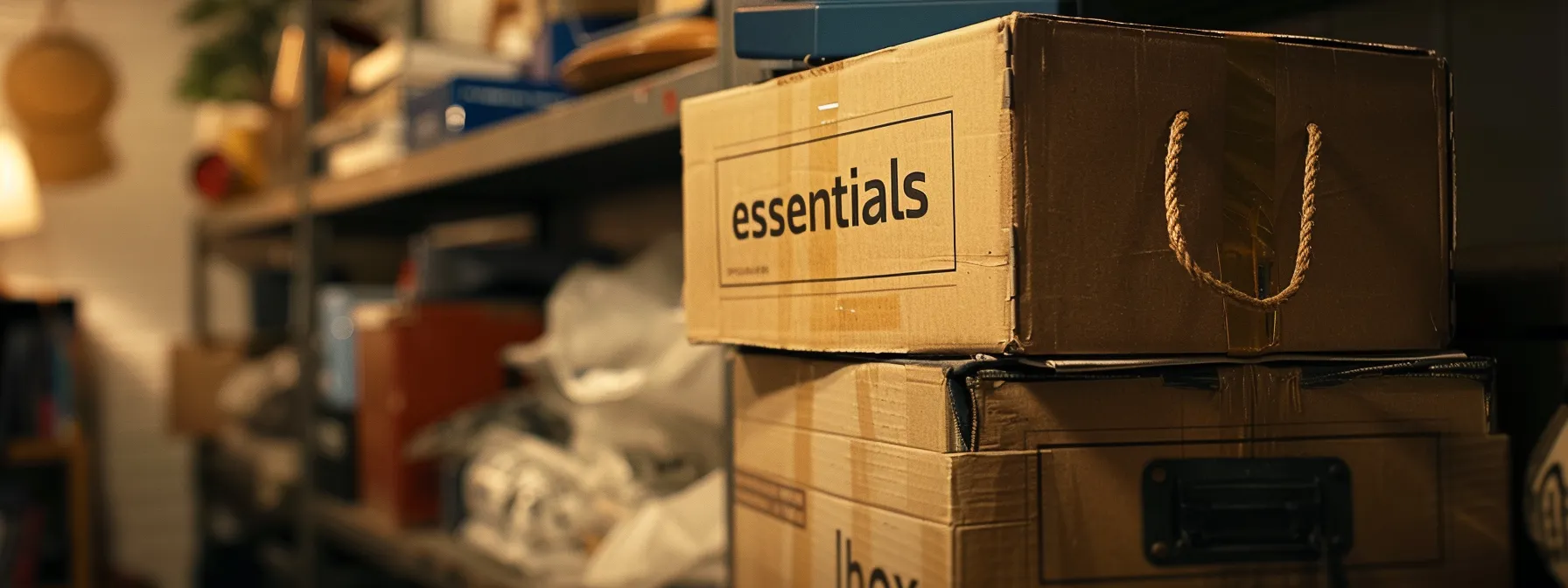
Gathering quality packing supplies sets the foundation for a successful interstate move. I focus on packing room by room, employing tips and tricks to streamline the process. Labeling boxes ensures easy unpacking, while protecting fragile and valuable items safeguards my belongings. Additionally, I prepare an essentials box with immediate needs, making the transition smoother as I settle into my new home.
Gathering Quality Packing Supplies
Gathering quality packing supplies is an essential part of preparing for my interstate move. I begin by researching the best materials, such as sturdy boxes, bubble wrap, and packing tape, to ensure that my belongings are protected during transit. My knowledge of ideal packing supplies not only helps safeguard fragile items but also makes the unpacking process smoother once I arrive at my new home. A helpful button in my move planning is to reach out to my estate agent for recommendations on where to find quality packing supplies or local rental options that complement my renting situation.
- Research packing materials for durability
- Purchase or rent boxes and packing supplies
- Gather protective materials for fragile items
- Consult with my estate agent for local resources
- Prepare a checklist of necessary supplies
Packing Room by Room: Tips and Tricks
Packing room by room is an effective strategy that I’ve found immensely helpful when preparing for an interstate move. By tackling one space at a time, I minimize chaos and ensure that I maintain an organized approach throughout the process. For example, I focus on clearing out my bedroom first, sorting items into keep, donate, or sell categories, and gathering cash from any sales to help cover moving expenses. This structured method not only streamlines packing but also addresses my needs for financial efficiency during the transition:
| Room | Action Items | Notes |
|---|---|---|
| Bedroom | Sort clothes, pack essentials, donate unused items | Utilize cash from sales for moving supplies |
| Kitchen | Pack dishes, organize pantry, check expiration dates | Consider using reusable bags for packing |
| Living Room | Pack décor, electronics, and books | Label boxes for easy unpacking |
| Bathroom | Dispose of expired products, pack essentials | Keep a travel bag for immediate needs |
Labeling Boxes for Easy Unpacking
Labeling boxes for easy unpacking is a crucial step I take to ensure a smooth transition into my new home after an interstate move. I use a simple color-coding system to categorize boxes by room, affixing labels that clearly identify their contents, which significantly reduces the time I spend searching for essentials once I arrive. By marking boxes with priority levels, I can easily access the items I need right away, minimizing frustration and helping me settle in quickly.
Protecting Fragile and Valuable Items
Protecting fragile and valuable items is crucial during my interstate move to ensure they arrive safely at my new home. I use sturdy boxes, bubble wrap, and packing paper to cushion delicate items like glassware and artwork. Additionally, I make sure to label these boxes clearly as “fragile” to inform anyone handling them, which helps minimize the risk of breakage during the moving process:
| Item Type | Protection Method | Notes |
|---|---|---|
| Glassware | Wrap with bubble wrap and pack in sturdy boxes | Use dividers for added protection |
| Artwork | Place between cardboard sheets and wrap | Transport upright to avoid bending |
| Electronics | Keep in original packaging if possible | Remove batteries to prevent leakage |
Packing an Essentials Box for Immediate Needs
Packing an essentials box for immediate needs is a critical step I take to ensure a smooth transition after my interstate move. I focus on including items I will need right away, such as toiletries, a change of clothes, important documents, and basic kitchen supplies. By preparing this box thoughtfully and clearly labeling it, I can quickly access everything I need without digging through other packed boxes, making my first days in the new home significantly easier and less stressful.
Packing is just the beginning. As you approach moving day, the logistics and final preparations become crucial.
Logistics and Final Preparations Before Moving Day
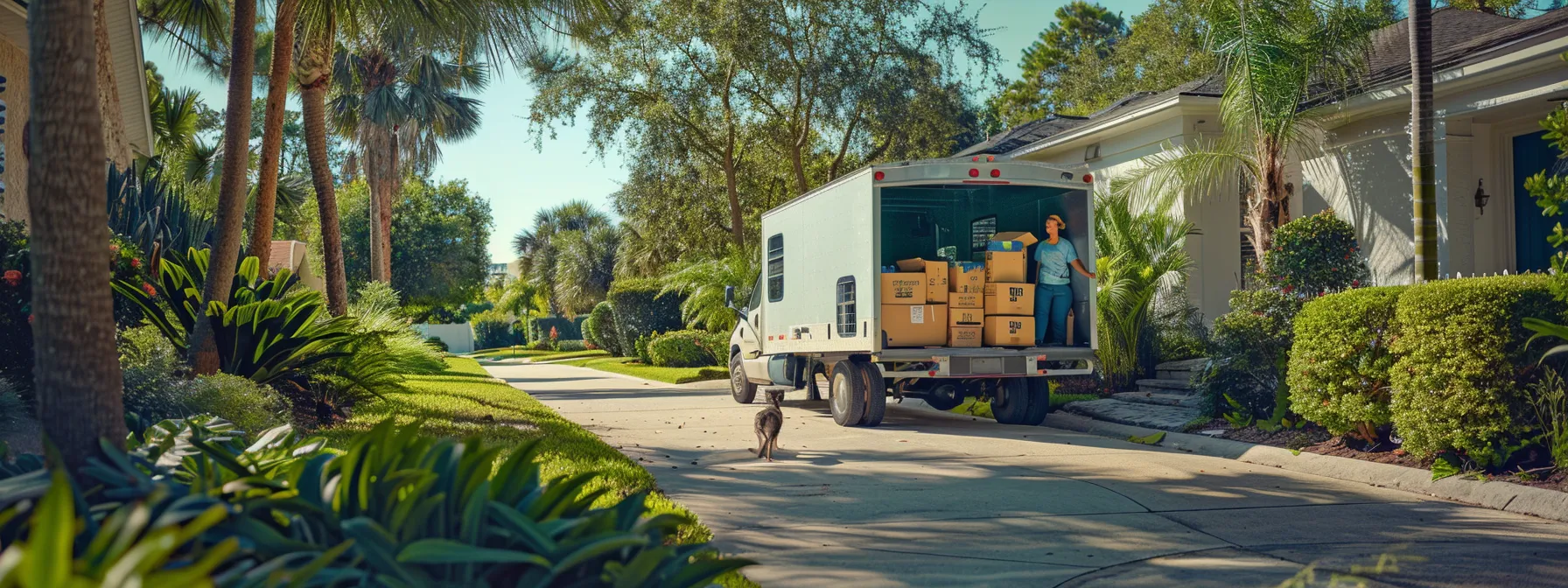
Before moving day arrives, it’s essential to tackle logistics and final preparations. I focus on transferring utilities and services to ensure that everything is set up at my new home. Updating my address and notifying relevant parties is crucial to avoid missing important mail. Additionally, I consider vehicle transportation options and make plans for my pets and plants, ensuring their safe relocation. Finally, I prepare my current home for the next occupants, leaving it in good condition. These steps help to create a seamless transition for my family and me as we embark on this journey.
Transferring Utilities and Services
Transferring utilities and services is a vital step I prioritize before moving day to ensure a seamless transition. I take the time to contact my current utility providers—like electricity, gas, water, internet, and phone services—to arrange disconnection and reconnection dates, preventing any lapses in service at my new home. I also make a checklist of all essential services that need transferring, so I don’t miss anything and can focus on settling in comfortably when I arrive at my new location.
Updating Address and Notifying Relevant Parties
Updating my address and notifying relevant parties is a critical step in my moving process, as it ensures that essential communications continue without disruption. I begin by informing the post office to forward my mail to my new address, which helps avoid missing important documents. Additionally, I update my address with banks, insurance companies, and utility providers to ensure timely processing of payments and services, allowing me to transition into my new home smoothly without encountering administrative delays.
Vehicle Transportation Options
When considering vehicle transportation options for my interstate move, I explore a few reliable methods to ensure my vehicle arrives safely at my new home. I typically weigh the choice between driving my car myself or utilizing professional auto transport services, which can significantly reduce my stress. If I choose the latter, I research various transport companies to find one that is licensed, insured, and has positive customer reviews, ensuring that my vehicle is in good hands during its journey.
Planning for Pets and Plants During the Move
Planning for my pets and plants during an interstate move requires careful consideration to ensure their safety and comfort throughout the journey. I always check the regulations regarding pet transportation in my new state, and I make arrangements for securing a pet-friendly environment upon arrival. Additionally, I prepare my plants for the move by assessing their hardiness and ensuring they are packed properly to minimize stress during transit, so they arrive healthy and thriving in our new home.
Preparing Your Home for the Next Occupants
Preparing my home for the next occupants is a vital step that I prioritize before moving day. I start by cleaning the entire space thoroughly to leave it in good condition, ensuring that surfaces are wiped down, carpets are vacuumed, and any repairs are made to address wear and tear. By providing this fresh environment, I help the new occupants feel welcome and settled as they transition into what was once my home.
- Clean all rooms and surfaces to ensure a fresh environment.
- Make necessary repairs for any damages or wear and tear.
- Remove personal belongings to create a blank canvas for the new occupants.
With the last box loaded and the door closed behind you, a mix of anticipation and relief washes over. Soon, you’ll step into your new home, and there, a fresh beginning awaits just beyond the threshold.
Settling Into Your New Home After the Move
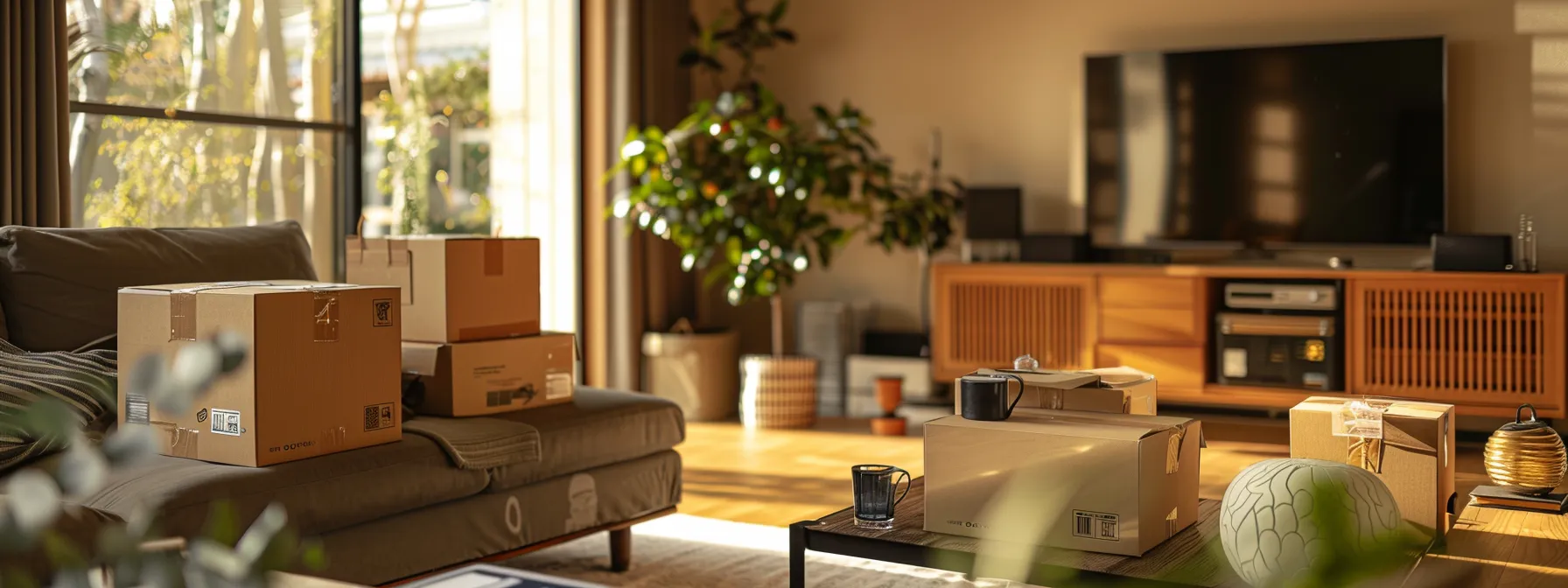
Unpacking systematically and efficiently is the first step I take to make my new place feel like home. I prioritize setting up utilities and services to ensure comfort right away. Exploring my new community helps me familiarize myself with local amenities, while registering for local services ensures I have all necessary documentation in place. Lastly, I share tips for adjusting to my new environment, making the transition smoother.
Unpacking Systematically and Efficiently
Unpacking systematically and efficiently is key to transforming my new house into a home. I start by focusing on one room at a time, unpacking essential items first to ensure that I can function comfortably from day one. This method not only helps minimize chaos but also keeps my momentum going as I see each space take shape and become livable:
- Prioritize unpacking essentials like toiletries and kitchen supplies.
- Work through each room one by one to avoid feeling overwhelmed.
- Label boxes clearly to quickly locate items when needed.
- Assemble furniture before decoration to streamline the process.
- Set aside time for breaks to maintain energy and focus.
Setting Up Utilities and Services in Your New Home
Setting up utilities and services in my new home is one of the first tasks I tackle after moving. I make a list of essential services—like electricity, gas, water, and internet—that need to be connected right away, ensuring that I have a comfortable environment to settle into. I contact local providers in advance to schedule activation dates, which helps avoid any discomfort when I arrive. By taking this proactive approach, I ensure a smooth transition into my new space, allowing me to focus on unpacking and enjoying my new surroundings.
Exploring Your New Community
Exploring my new community after an interstate move is an exciting way to start feeling at home. I typically take time to visit local parks, shops, and restaurants, which helps me familiarize myself with the neighborhood. Engaging with nearby services, such as grocery stores and healthcare facilities, allows me to find resources that will enhance my daily life and discover local events or activities that foster connection with my new surroundings.
| Action | Description | Benefits |
|---|---|---|
| Visit Local Parks | Explore green spaces for outdoor activities. | Helps relax and enjoy nature. |
| Discover Shops and Restaurants | Check out local eateries and stores. | Encourages supporting local businesses. |
| Engage with Community Services | Connect with grocery stores and services. | Sets up important local resources and convenience. |
| Attend Local Events | Join community events and activities. | Builds connections with neighbors and friendships. |
Registering for Local Services and Documentation
Once I settle into my new home, registering for local services and documentation becomes a top priority to ensure a smooth transition. I start by updating my address with the post office to avoid missing important mail, followed by registering for utilities such as electricity, water, and internet with local providers. Additionally, I make sure to update my details with banks, healthcare providers, and any subscriptions I have, which not only streamlines communication but also helps me avoid unnecessary delays in accessing essential services.
Tips for Adjusting to a New Environment
As I settle into my new home, one of the key tips for adjusting to a new environment is to take the time to explore my neighborhood. By visiting local shops, parks, and community centers, I not only familiarize myself with essential services but also discover hidden gems that make the area unique. Engaging with my new surroundings helps me feel connected and builds a sense of belonging, easing the transition after my interstate move.

